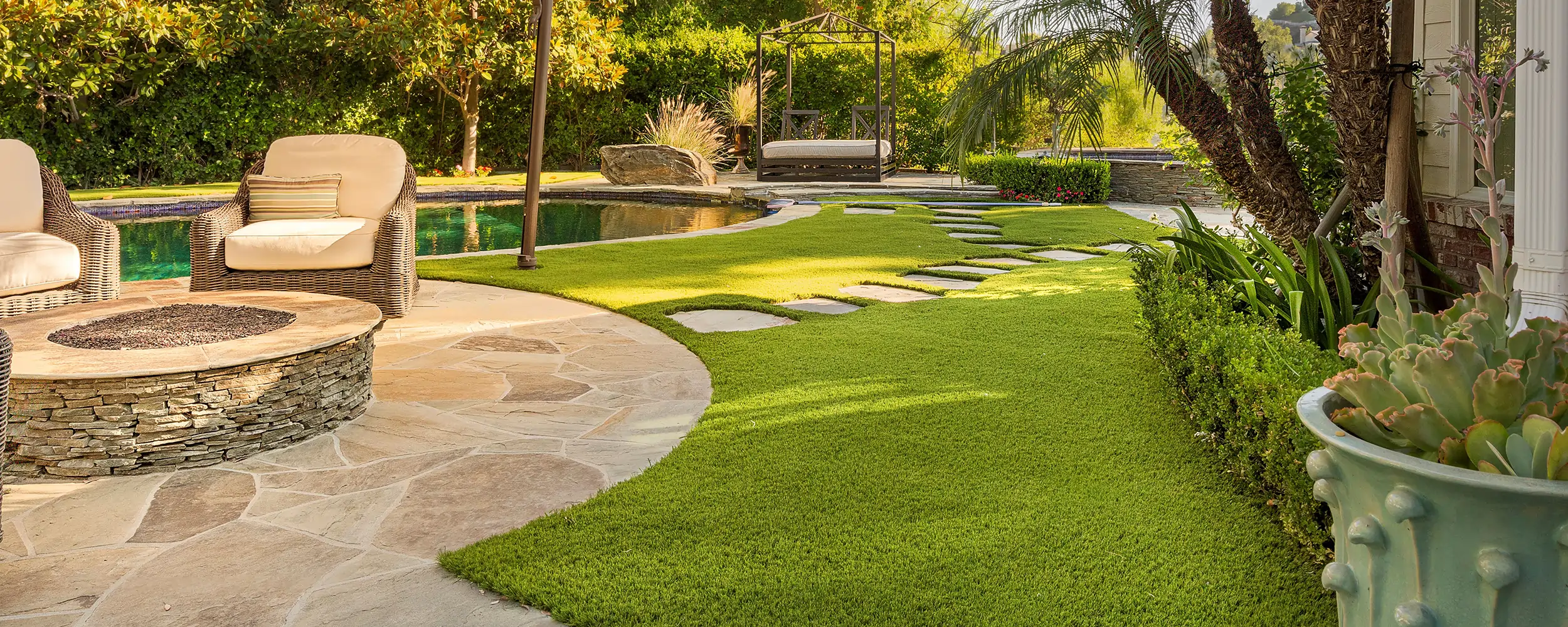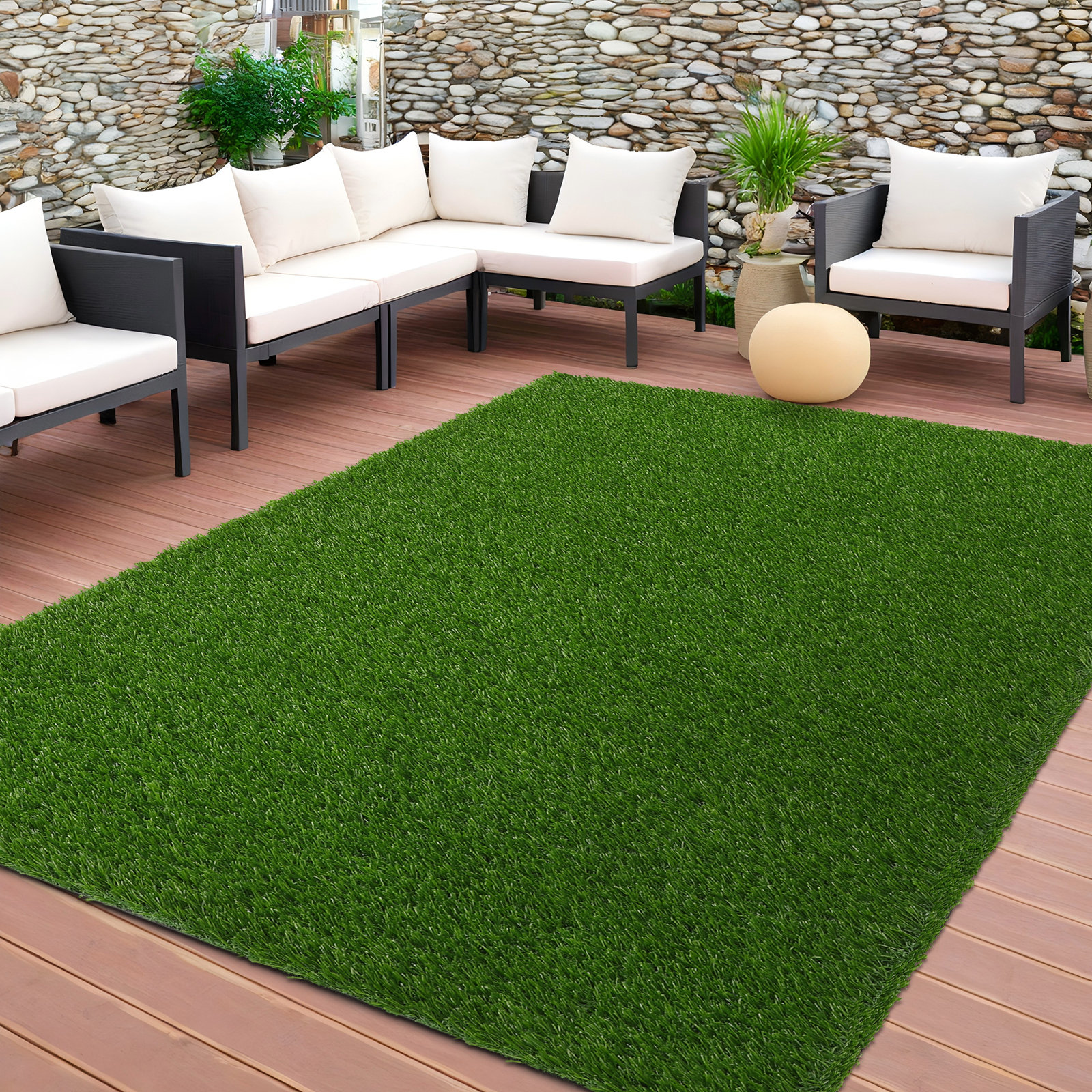Find Trusted Artificial Turf Companies Phoenix for Your Outdoor Needs
Find Trusted Artificial Turf Companies Phoenix for Your Outdoor Needs
Blog Article
Look Into the Environmental Perks of Opting for Artificial Grass Solutions
The fostering of synthetic lawn solutions presents a compelling chance to attend to pressing environmental obstacles. By dramatically decreasing water use and decreasing the application of unsafe chemicals, these options not just promote lasting landscape design yet additionally safeguard regional ecosystems. Moreover, the lower carbon footprint related to decreased upkeep activities adds to a more sustainable approach to land management. The implications of these advantages expand past mere conservation initiatives, elevating questions regarding their long-lasting effect on habitat preservation and total environmental balance. Discovering these dimensions reveals a complex interplay worth considering.
Water Preservation Advantages
One of the most significant benefits of synthetic turf is its ability to conserve water. In contrast, artificial turf does not require watering, substantially decreasing the overall demand for water sources.
By getting rid of the requirement for regular watering, synthetic grass adds to lasting landscape techniques and helps reduce the ecological effect of too much water intake. The preservation of water extends to the reduction of drainage, which can lead to dirt erosion and waterway pollution.
Furthermore, the installment of synthetic grass enables home owners and municipalities to assign water sources extra successfully, concentrating on crucial uses such as drinking water and farming. The change towards man-made grass not just advertises responsible water use yet additionally straightens with broader ecological objectives targeted at protecting all-natural sources.
As communities significantly focus on sustainability, the water conservation advantages of artificial lawn offer a compelling situation for its fostering in industrial and household landscaping projects.
Minimized Chemical Usage
The shift to synthetic grass considerably decreases the dependence on chemical therapies typically made use of in all-natural lawn upkeep. Typical turf administration typically includes the application of plant foods, pesticides, and herbicides to advertise development and control bugs. These chemicals can pose dangers to human health, local wild animals, and the environment, adding to dirt and water contamination.
In contrast, fabricated lawn eliminates the need for these unsafe compounds. By lessening the release of artificial substances right into the environment, man-made grass promotes much healthier soil and water systems.
Furthermore, the lack of chemical overflow connected with man-made turf installations assists safeguard regional rivers from air pollution, sustaining aquatic life and preserving biodiversity. Phoenix turf companies. As neighborhoods significantly prioritize lasting practices, choosing man-made turf presents a sensible solution that aligns with environmental preservation goals. With this shift, home proprietors can enjoy lavish green rooms without compromising environmental health, leading the way for a more sustainable future
Reduced Carbon Footprint

Additionally, the setup of synthetic grass can result in substantial water preservation. Natural lawns require significant amounts of water for irrigation, which not just includes in the carbon footprint associated with water extraction and treatment yet additionally stress local water resources. On the other hand, synthetic grass requires marginal upkeep, requiring no watering, consequently dramatically lowering water use and its connected power costs.
Furthermore, the durability of synthetic grass adds to its decreased carbon influence. With a life-span of up to 15 years or more, the requirement for regular substitutes is decreased, resulting in much less waste and reduced energy consumption in manufacturing and dealing with conventional yard alternatives. On the whole, synthetic grass presents a sustainable alternative for ecologically mindful landscape design.
Habitat Preservation
Habitat conservation is an important factor to consider in the debate over landscaping selections, especially when contrasting man-made lawn to all-natural lawn. Natural lawn yards usually need considerable upkeep, including using herbicides, chemicals, and plant foods, which can detrimentally impact neighborhood ecosystems. These use this link chemicals can leach into the dirt and rivers, damaging indigenous flora and fauna and disrupting regional habitats.
On the other hand, synthetic grass presents a chance to decrease the ecological footprint of landscaping. By deciding for synthetic yard, property owners can lessen the disturbance of all-natural habitats connected with conventional yard care practices. Synthetic turf eliminates the requirement for harmful chemicals, therefore shielding close-by wildlife and preserving the honesty of surrounding ecological communities. The installment of fabricated turf can lead to the conversion of previous grass areas right into even more biodiverse landscapes, such as pollinator gardens or native plant locations, which can support local wild animals.
Inevitably, the shift to synthetic lawn not only conserves water and lowers maintenance efforts yet likewise fosters a much more harmonious partnership between human tasks and the natural surroundings, promoting environment conservation at the same time.
Long-Term Sustainability
Long-lasting sustainability is a critical factor in examining the advantages of synthetic grass over standard grass yards. Among one of the most significant benefits of man-made lawn is its toughness; it can last up to 15-20 years with minimal upkeep, whereas all-natural lawn needs regular reseeding and substitute. This longevity minimizes the need for constant sources, such as water, fertilizers, and chemicals, which are essential for maintaining a healthy grass lawn.
Additionally, artificial grass contributes to a reduction in carbon emissions related to lawn treatment equipment. Traditional lawns often need gas-powered lawn mowers, trimmers, and blowers, every one of which add to air pollution. Phoenix turf companies. In comparison, synthetic grass gets rid of the demand for such devices, advertising a cleaner atmosphere
Furthermore, the manufacturing of synthetic grass progressively uses recycled materials, enhancing its sustainability account. As suppliers adopt green methods, the environmental footprint of man-made turf continues to lessen.

Conclusion
The adoption of fabricated turf services offers considerable environmental advantages, including substantial water conservation, reduced reliance on damaging chemicals, and a lower carbon impact. Furthermore, fabricated grass help in preserving natural habitats by minimizing land disruption and advertising long-term sustainability through using durable materials. Jointly, these aspects underscore the capacity of man-made turf to add positively to environmental health and like it wellness and use a viable choice to standard landscape design methods in an increasingly resource-conscious her response world.
In comparison, synthetic turf does not require watering, dramatically decreasing the general demand for water sources. By decreasing the release of artificial compounds into the community, fabricated turf promotes healthier soil and water systems.
Moreover, the setup of fabricated lawn can result in considerable water preservation. In comparison, man-made turf needs very little upkeep, needing no watering, therefore dramatically reducing water use and its connected power costs.

Report this page